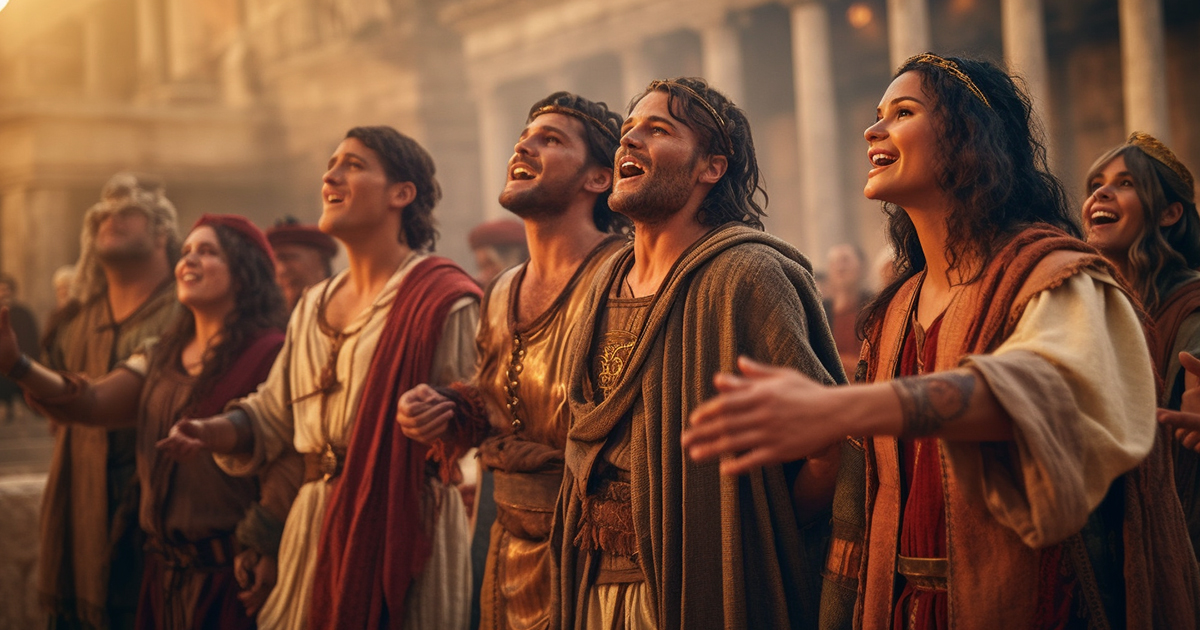Introducing the Melodic Past:
Peering into the rich and diverse cultural universe of ancient Rome doesn’t just reveal its grand structures and political dominance. The Romans left an indelible mark on humanity through their contributions to literature, philosophy, and music. Among their cultural legacy lies the realm of music, offering a glimpse into the sentiments and beliefs of ancient Romans. The sonic landscape of ancient Rome captivates us with a fusion of melody, rhythm, and meaning, transporting us back to a time when music resonated through the byways, theaters, and majestic edifices of the Eternal City.
Exploring a Spectrum of Musical Instruments:
To grasp the harmonies of ancient Rome, we must first acquaint ourselves with the instruments that embellished their musical groups. Romans embraced a diverse array of instruments, some indigenous and others borrowed from diverse cultures. The tibiae, also dubbed Roman pipes, rose as a favored wind instrument, while the lyre, a plucked string instrument, carried profound cultural significance. The tuba, resembling a trumpet, reverberated with its deep tones, while the cithara, an enlarged variant of the lyre, emitted delicate sounds.
Diverse Genres and Performances in Music:
The musical panorama of ancient Rome consisted of a myriad of genres, each with its distinct purpose and setting. The tibicines, or pipe players, played a pivotal role in religious rites and processions, infusing sacred spaces with haunting melodies. Theatrical displays showcased an assortment of musical accompaniments, with the aulos, a double-reed instrument, offering a vibrant and rhythmic backdrop to actors’ enactments. In more intimate settings, small ensembles of musicians would regale guests during feasts, conjuring an ambiance of refinement and grace.
The Greek Influence on Musical Artistry:
The Romans deeply admired Greek culture, including its music. Greek traditions profoundly impacted Roman musical styles, resulting in a melange of techniques and expressions. Roman composers adapted and altered Greek musical modes, referred to as the harmoniai, to harmonize with their tastes and cultural ethos. This fusion engendered a tapestry of melodies where the splendor of Greece intertwined with the distinct Roman spirit.
Music’s Social Impact:
Music wielded significant influence in Roman society, serving as entertainment, a conduit for religious reverence, and a medium for propagating political messages. Public performances were integral to communal life, with musicians and dancers taking center stage during festivities and triumphant processions. Music also facilitated social bonds and emotional catharsis in private gatherings. Its reach was extensive, capable of stirring emotions, nurturing patriotism, and shaping public sentiment.
The Timeless Heritage of Roman Music:
While the precise melodies of ancient Roman music have dissipated with time, remnants of their musical traditions endure through written records and archaeological findings. Roman musical notation, characterized by neumes, provides glimpses into the melodic structures and rhythmic patterns that once reverberated through ancient Rome. Today, scholars and musicians strive to rejuvenate and reinterpret this ancient musical legacy, infusing vitality into the echoes of a forgotten epoch.
Wrapping up Thoughts:
Embarking on a musical expedition through ancient Rome unveils a concealed trove of treasures. It unveils the intricate interplay of music, culture, and society in one of history’s most extraordinary civilizations. The music of ancient Rome, with its varied instruments, genres, and influences, encapsulated the core of Roman identity. Embracing this musical inheritance offers profound insights into the human journey and the enduring capacity of music to transcend epochs, linking us to our shared past.
